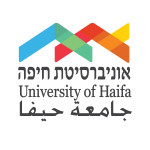Tinjdad
Tinjdad is a town that became a regional center at the time of the French Protectorate; it is located in the Ferkla valley, which offers a natural passage between the *Dadès, *Todgha, *Dra‘a and Ziz (*Tafilalet) valleys. Not far from Tinjdad, in the Asrir district, two small mellahs settled in the sixteenth-century—Aït Lbzem and Aït Far. They were close to each other and shared a cemetery; however, they fell under the protection of different Berber tribes, according to tradition.
The Jews owned farmlands in the valley; one of them was one of the largest landowners in the valley, and he received a whole day of irrigation. Jews worked as artisans, tinsmiths, saddlers, cobblers, jewelers, and traded at the local and interregional levels.
In the Ferkla region, there were other mellahs what have now disappeared but whose names have survived in legal documents in Hebrew, such as Tashersht, or in the memory of neighboring Berbers, Set. Not far from Tinjdad, in Goulmima (formerly known as Ghris), on the way to Errachidia, there were two other mellahs in the twentieth-century; they lived essentially from interregional trade, under the protection of the Ait Marghad tribe that was constantly fighting the large Ait Atta tribe, which dominated the region. In the nineteenth-century, the main rabbinic figure in the area was Moshe Abikhzer, who was a dayyan (judge) in Ghris.
The population of all these mellahs emigrated in the years 1954-1963, primarily to Israel.
Bibliography
Bar-Asher, Shalom. Toldot Yehude Derom-Mizraḥ Maroḳo: ba-meʼot ha-shemone-‘esrh-ha-ʻeśre: sheṭarot mi-ḳehilot Ḳaṣer Asuḳ u-Gris (Jerusalem, 1992).
Hirschberg, H. Z. Me-ereṣ mevo ha-shemesh: ʻim Yehude Afriq̣a ha-Ṣefonit be-arṣotehem. Jerusalem: ha-Maḥlaḳah le-ʻinyene ha-noʻar ṿeha-ḥ̣aluts shel ha-Histadrut ha-Ṣiyonit, 1957).
Jacques-Meunié, Djinn. Le Maroc saharien des origines à 1670, 2 vols. (Paris: Editions Klincksieck, 1982).

